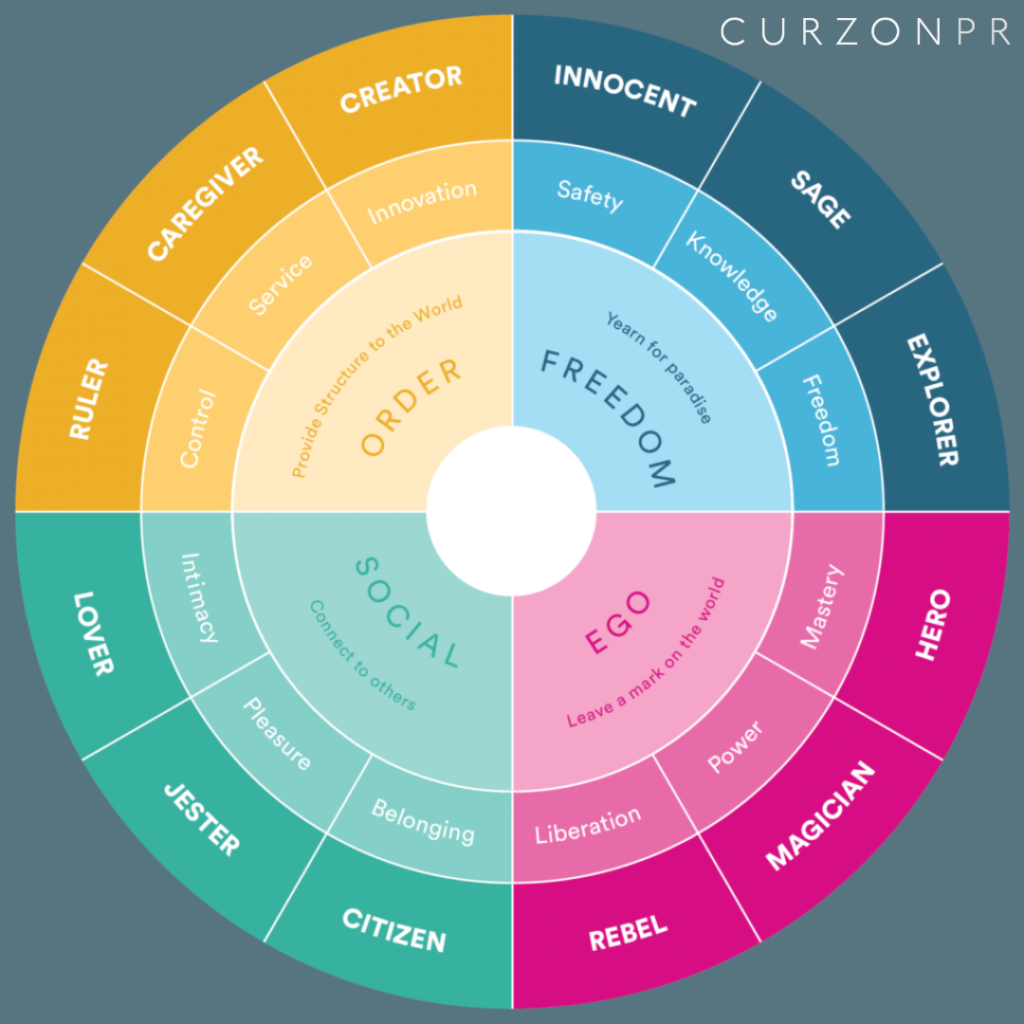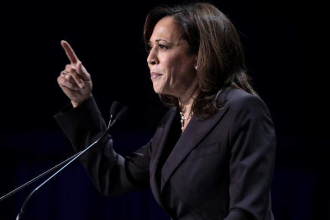
Tuesday September 19, 2023
Unlocking the Power of Brand Archetypes in PR
In the world of PR and communications, there is a powerful tool that builds brands that resonate deeply with the human psyche – Brand Archetypes. Picture these archetypes as keys to unlocking the hearts and minds of your target audience. They aren’t just symbols but the DNA of your brand.
This blog delves into the world of brand archetypes, their history, and how they can be harnessed for effective PR and communication strategies.
The Genesis of Brand Archetypes
The concept of brand archetypes is rooted in two influential thinkers: Carl Jung, the Swiss psychiatrist, and Joseph Campbell, the American mythologist. Carl Jung introduced the idea of archetypes in psychology in 1919, suggesting that they are universal symbols and themes embedded in our collective unconscious. These archetypes embody fundamental human motivations, desires, and fears.
Joseph Campbell expanded on Jung’s work by exploring myths and storytelling across cultures in 1949. He introduced the “hero’s journey,” a narrative structure embedded in stories worldwide. This journey involves a hero embarking on an adventure, facing challenges, and ultimately returning transformed.
Communicators and brand strategists have drawn from Jung and Campbell’s concepts to create brand archetypes in branding. These archetypes help define a brand’s character and story, making it relatable and emotionally engaging for consumers.
The 12 Brand Archetypes
Let’s explore the 12 common brand archetypes and examples of popular brands that have successfully adopted each one.
1) The Innocent
Characteristics: Purity, simplicity, goodness
Example: Coca-Cola
Communication: Coca-Cola’s communication evokes simplicity, happiness, and nostalgia, creating moments of joy and sharing.
2) The Explorer
Characteristics: Adventure, seeking new experiences, freedom
Example: Red Bull
Communicarion: Red Bull’s communication encourages consumers to embrace excitement and challenge the status quo, embodying the spirit of adventure.
3) The Sage
Characteristics: Wisdom, knowledge, expertise
Example: Harvard University
Communication: Harvard’s communication emphasises its long history of academic excellence, positioning itself as a source of wisdom and knowledge.
4) The Hero
Characteristics: Bravery, resilience, triumph over adversity
Example: Nike
Influence: Nike’s communication inspires consumers to be courageous and push their limits, celebrating the triumph of athletes over challenges.
5) The Outlaw
Characteristics: Rebellion, non-conformity, disruptiveness
Example: Harley-Davidson
Communication: Harley-Davidson fosters a sense of freedom and individualism, challenging the status quo through its communication.
6) The Magician
Characteristics: Transformation, innovation, enchantment
Example: Apple
Communication: Apple’s communication creates a sense of wonder and possibility surrounding technology, embodying innovation.

7) The Everyman
Characteristics: Relatability, inclusivity, down-to-earth
Example: IKEA
Communication: IKEA’s communication focuses on inclusivity and everyday solutions, making consumers feel at home.
8) The Lover
Characteristics: Passion, intimacy, connection
Example: Victoria’s Secret
Communication: Victoria’s Secret builds personal connections with customers, emphasising passion and sensuality.
9) The Caregiver
Characteristics: Compassion, empathy, nurturing
Example: Johnson & Johnson
Communication: Johnson & Johnson’s communication highlights their commitment to well-being and care, fostering trust.
10) The Jester
Characteristics: Humor, fun, spontaneity
Example: Old Spice
Communication: Old Spice entertains and adds a playful element to personal grooming, embodying humour.
11) The Ruler
Characteristics: Ambition, achievement, success
Example: Rolex
Communication: Rolex symbolises achievement and success, emphasising luxury, prestige, and exclusivity.
12) The Creator
Characteristics: Innovation, creativity, individuality
Example: Lego
Communication: Lego encourages imaginative play and self-expression, embodying creativity.
Leveraging Brand Archetypes in PR and Communications
Understanding the 12 brand archetypes is just the beginning. The real power lies in how you can leverage these archetypes to enhance your PR and communication strategies. Here’s how:
- Consistency Is Key: Align all aspects of your brand’s messaging, tone, visuals, and values with your chosen archetype. Consistency fosters a recognisable and relatable brand identity.
- Engaging Storytelling: Craft narratives that resonate with the elements and narratives associated with your archetype. Engaging storytelling creates emotional connections with your audience.
- Know Your Audience: Identify which archetype resonates most with your target audience. Tailoring your communication to their preferences can lead to stronger connections and more effective strategies.
- Content Creation: Develop content for blogs, social media, and other communication channels that reflect your brand’s archetype. This enhances your brand’s appeal and relevance.
- Crisis Management: Use your brand’s archetype as a guide for crisis communication. Ensure that your response aligns with your established brand archetype, maintaining trust.
Brand archetypes are a powerful tool that PR and communication professionals can employ to create a consistent and compelling brand identity. By embracing the 12 archetypes and leveraging them in your communication strategies, you can unlock the full potential of brand archetypes to engage your audience and build lasting brand loyalty.
Curzon PR is a London-based PR firm working with clients globally. If you have any questions, please feel free to contact our Business Development Team bd@curzonpr.com







Follow us